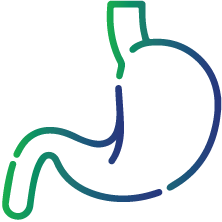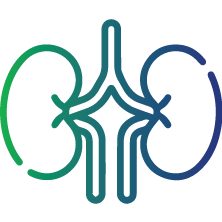
Histopathology Specimens & Tests
What is histopathology?
Histopathology is defined as the study of changes that occur in tissues owing to a disease. It involves examination of intact tissue under the microscope to look for indications of illnesses, damage, or other abnormalities; the tissue can be extracted from body using needle, endoscopic, liquid or surgical biopsy. This process is aided by the use of special staining techniques and other associated tests like using antibodies to identify different components of the tissue.
Common types of biopsy processes are needle or surgical biopsies. Needle biopsy procedures are less invasive where a very small piece of tissue is taken out through the needle. Whereas during surgical or “open” biopsy, doctors surgically remove the required tissue for possible disease diagnosis. These procedures may be performed under local or general anesthetics.
When is histopathology recommended?
If you are experiencing any symptoms of diseases like cancer or any type of viral, parasitic or bacterial infection, then your doctor may recommend a histopathology medical test. The main purpose of this test is to detect any abnormal changes in cells of the patient tissue that may help to find out the underlying cause of the disease. Histopathology is performed by a specialist doctor known as histopathologist, who studies tiny pieces of tissue from a patient’s body and document the details observed.
What is histopathology test used for?
Histopathology is used to diagnosed certain conditions, including:

Ulcerative colitis

Crohn's disease

Uterine fibroids

Cancer

Infections
What sample is collected?
A tissue sample is collected using biopsy. This tissue can be extracted from:

Breast

Skin

Gastrointestinal (stomach, intestine)

Liver

Brain

Uterus

Urology (kidneys, ureters, bladder and urethra)
Preparation for histopathology test
Your doctor will recommend the appropriate biopsy procedure depending on your disease. And will advise you on pre-test preparations, make sure to follow instructions closely.
Interpreting the histopathology results
The pathologist's findings are used to determine the prognosis of a disease, especially in diseases like cancer.
Histopathology reports on tissue specimens include:
- A description of the appearance of the tissue sample
- A diagnosis
- A summary report detailing the findings of the case
- Pathologist's comments
Prognosis is defined as the prediction of survival or recovery from a disease.
Prognostic indicators may include:
-
Size and severity of the disease.
- Indications whether the cancer has spread and the extent of spread (invasive or non-invasive).
- Tumor grade is typically used only for cancers, it describes how the abnormal cells compared to normal cells; low-grade cells look more like healthy cells (Grade 1) while high-grade cells look more abnormal (Grade 4). This is used to help determine the course of the disease.
- Tumor margins describes the appearance of the tissue found at the edges of the sample.
- Staging provides information on where the cancer is found in the body and how far it has spread.
Histopathology reports can be difficult to understand, so it is important to go over them with your doctor.
FAQs
How is histopathology test performed?
The procedure of a histopathology test includes removing a small tissue from the patient’s body by either cutting (surgery) or by suction via a needle. The sample is then processed, histological sections are stained, positioned upon glass slides and observed under a microscope by a pathologist.
What is the turnaround time (TAT) for the results of a histopathology test?
Because histopathology test requires special preparation, results of the test can take several days. In the case of frozen section procedure, the results are available immediately.
What are the limitations of this test?
Sometimes a definitive diagnosis may not be possible due to insufficient material, and you may need to undergo a repeat surgical biopsy or needle biopsy procedure.
What are the risks involved in the biopsy process for a histopathology test?
During and after the biopsy procedure, you experience mild pain, bruising, and bleeding at the biopsy site. Occasionally, these complications are significant. Severe bleeding or infection rarely occurs which may require further treatment.
What is histopathology test commonly used for ?
Doctors commonly perform histopathology for the diagnosis of cancer, a histopathologist views the tissue sample for the presence of cancerous cells.
Some of the key points addressed by the histopathologist in the report include:
- Presence or absence of cancerous cells
- The types of tissues the cancerous cells appear to be in
- The percentage of cancerous cells present which help determine the treatment response

